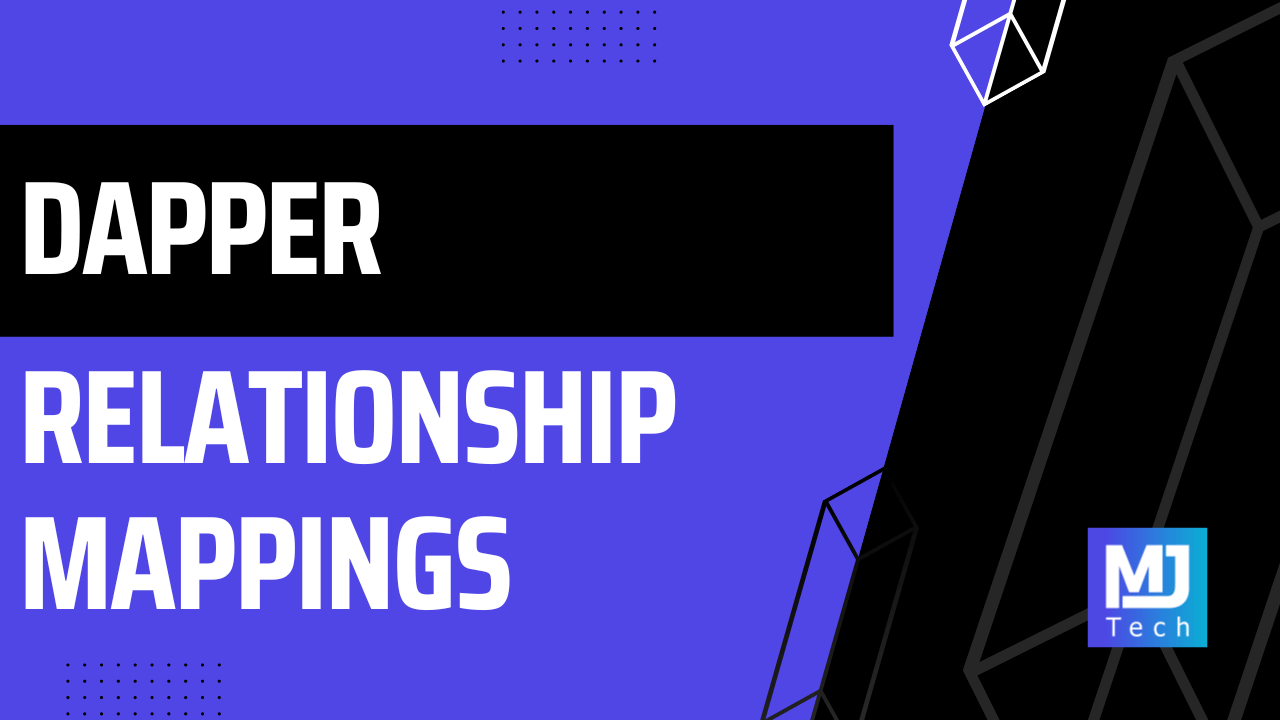Mastering Dapper Relationship Mappings
 Milan Jovanović
Milan Jovanović
Dapper is a lightweight object-relational mapper in .NET. It's popular because it's easy to use and fast at the same time.
Dapper extends the IDbConnection interface with methods for sending SQL queries to the database.
But, because of the nature of SQL, mapping the result into an object model can be tricky.
So in this week's newsletter, I'll teach you how to map:
Simple queries
One-to-one relationships
One-to-many relationships
Many-to-many relationships
Let's dive in.
Simple Mapping
Let's first see how to do a simple mapping using Dapper.
Writing a query with Dapper has three parts:
Creating an
IDbConnectioninstanceWriting the SQL query
Calling a method that Dapper exposes
We will write a SQL query to load a set of LineItem objects for a specific Order.
public class LineItem
{
public long LineItemId { get; init; }
public long OrderId { get; init; }
public decimal Price { get; init; }
public string Currency { get; init; }
public decimal Quantity { get; init; }
}
Here's the SQL query returning the result we need:
SELECT Id AS LineItemId, OrderId, Price, Currency, Quantity
FROM LineItems
WHERE OrderId = @OrderId
I'm parameterizing the Order identifier using the @OrderId syntax. This is a Dapper convention. It's important that you use parameterized queries to avoid SQL injection attacks.
The mapping is straightforward in this case because we are only returning one type from the database.
We call the QueryAsync method and specify LineItem as the return type. Make sure to pass in the arguments for this method, the SQL query, and the OrderId parameter. I prefer creating anonymous objects for Dapper parameters.
using var connection = new SqlConnection();
var lineItems = await connection.QueryAsync<LineItem>(
sql,
new { OrderId = orderId });
That's everything you need for a simple mapping.
Dapper One To One Relationship Mapping
What if the object we want to return from the SQL query contains a nested object?
Here's an updated LineItem type that also contains a Product inside.
public class LineItem
{
public long LineItemId { get; init; }
public long OrderId { get; init; }
public decimal Price { get; init; }
public string Currency { get; init; }
public decimal Quantity { get; init; }
}
public class Product
{
public long ProductId { get; init; }
public string Name { get; init; }
}
Now you need to return two types in the same query.
Here's the updated SQL query with a join on the Products table:
SELECT li.Id AS LineItemId, li.OrderId, li.Price, li.Currency, li.Quantity,
p.Id AS ProductId, p.Name
FROM LineItems li
JOIN Products p ON p.Id = li.ProductId
WHERE li.OrderId = @OrderId
This query is more complicated because we need to use Dapper's multi-mapping feature.
In the QueryAsync method, we specify both LineItem and Product as return types and LineItem as the final return type for the method.
We must also tell Dapper how to map the LineItem and Product from the result set into a single LineItem object.
And we need to specify the splitOn argument, which tells Dapper where one object ends and the next begins.
using var connection = new SqlConnection();
var lineItems = await connection.QueryAsync<LineItem, Product, LineItem>(
sql,
(lineItem, product) =>
{
lineItem.Product = product;
return lineItem;
},
new { OrderId = orderId },
splitOn: "ProductId");
We write more code to make this work, but it should be easy to wrap your head around it.
Dapper One To Many Relationship Mapping
Another frequent situation is mapping a one-to-many relationship from SQL into an object model.
Because you are joining two tables, the result set will contain duplicate data on the "one" side of the relationship.
For this example, let's use an Order with a list of LineItem objects.
public class Order
{
public long OrderId { get; init; }
public List<LineItem> LineItems { get; init; } = new();
}
public class LineItem
{
public long LineItemId { get; init; }
public long OrderId { get; init; }
public decimal Price { get; init; }
public string Currency { get; init; }
public decimal Quantity { get; init; }
}
Here's the SQL query returning the data we need from the database:
SELECT o.Id AS OrderId,
li.Id AS LineItemId, li.OrderId, li.Price, li.Currency, li.Quantity
FROM Orders o
JOIN LineItems li ON li.OrderId = o.Id
WHERE o.Id = @OrderId
We're going to get back duplicate Order data because of the JOIN. But we only want to return one Order with all the line items.
The Dapper mapping function only gives us the Order and LineItem for the current row in the result set.
One way to solve this is to use a Dictionary to store the Order and reuse it inside the mapping.
Store the
Orderin the dictionary if it's not thereIf it is there, add the
LineItemto the existingOrderinstance
using var connection = new SqlConnection();
var ordersDictionary = new Dictionary<long, Order>();
await connection.QueryAsync<Order, LineItem, Order>(
sql,
(order, lineItem) =>
{
if (ordersDictionary.TryGetValue(order.OrderId, out var existingOrder))
{
order = existingOrder;
}
else
{
ordersDictionary.Add(order.OrderId, order);
}
order.LineItems.Add(lineItem);
return order;
},
new { OrderId = orderId },
splitOn: "LineItemId");
var mappedOrder = ordersDictionary[orderId];
A many-to-many relationship would use the same idea, except you'll need two dictionaries for each side of the relationship.
In Summary
Dapper is a fantastic library for writing fast database queries using SQL.
Because of how SQL works, mapping into an object model is sometimes complicated.
There are four common scenarios:
Simple mapping - a flat structure mapped directly from SQL to an object
One-to-one mapping - provide a mapping function to connect two objects
One-to-many mapping - manage a dictionary for the "one" side of the relationship
Many-to-many mapping - same as above, except you need a dictionary for both sides of the relationship
Now you have a cheat sheet for mapping relationships with Dapper.
Hope this was helpful.
I'll see you next week!
P.S. Whenever you’re ready, there are 2 ways I can help you:
Pragmatic Clean Architecture: This comprehensive course will teach you the system I use to ship production-ready applications using Clean Architecture. Learn how to apply the best practices of modern software architecture. Join 950+ students here.
Patreon Community: Think like a senior software engineer with access to the source code I use in my YouTube videos and exclusive discounts for my courses. Join 820+ engineers here.
Subscribe to my newsletter
Read articles from Milan Jovanović directly inside your inbox. Subscribe to the newsletter, and don't miss out.
Written by

Milan Jovanović
Milan Jovanović
I'm a seasoned software architect and Microsoft MVP for Developer Technologies. I talk about all things .NET and post new YouTube videos every week.